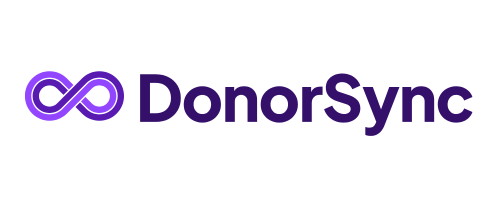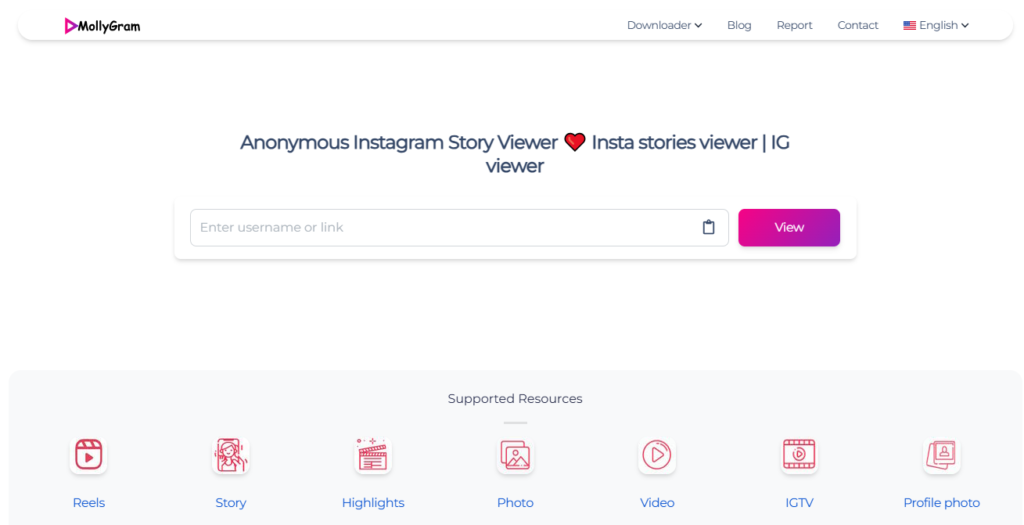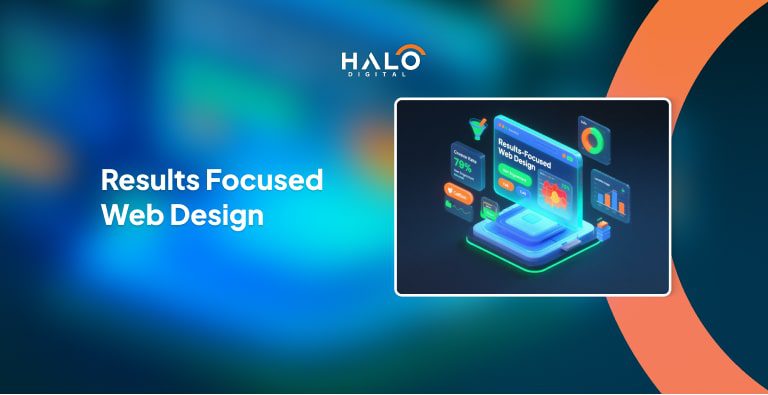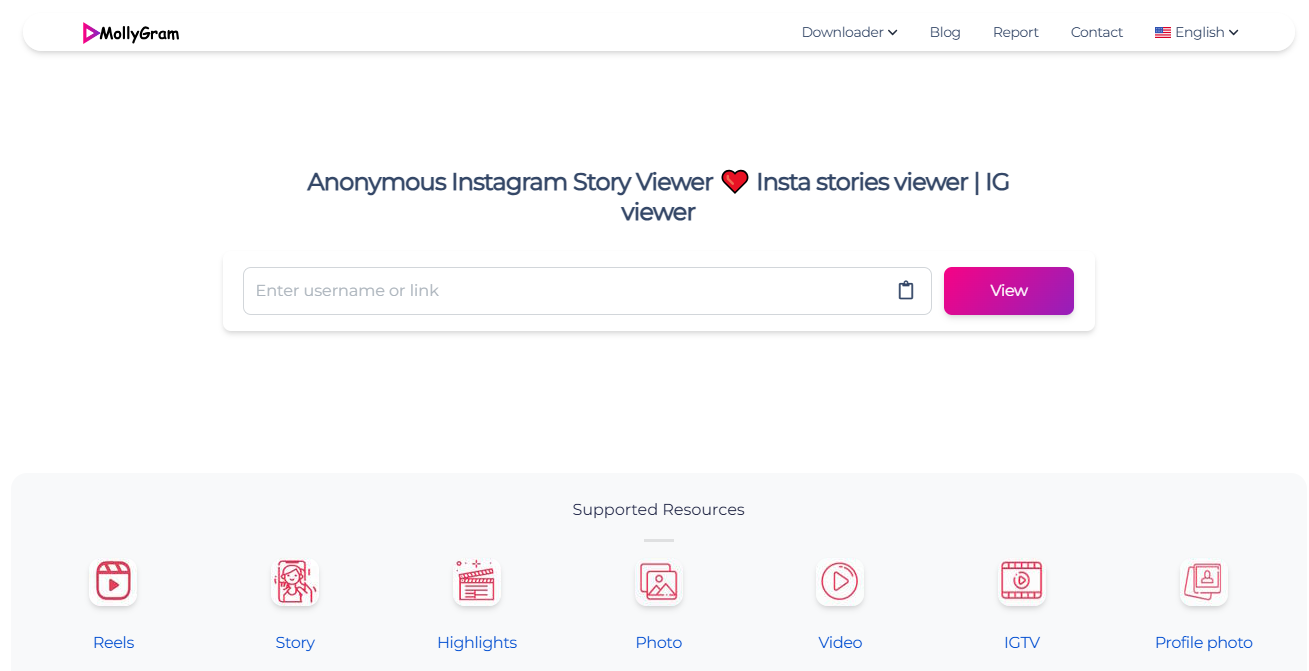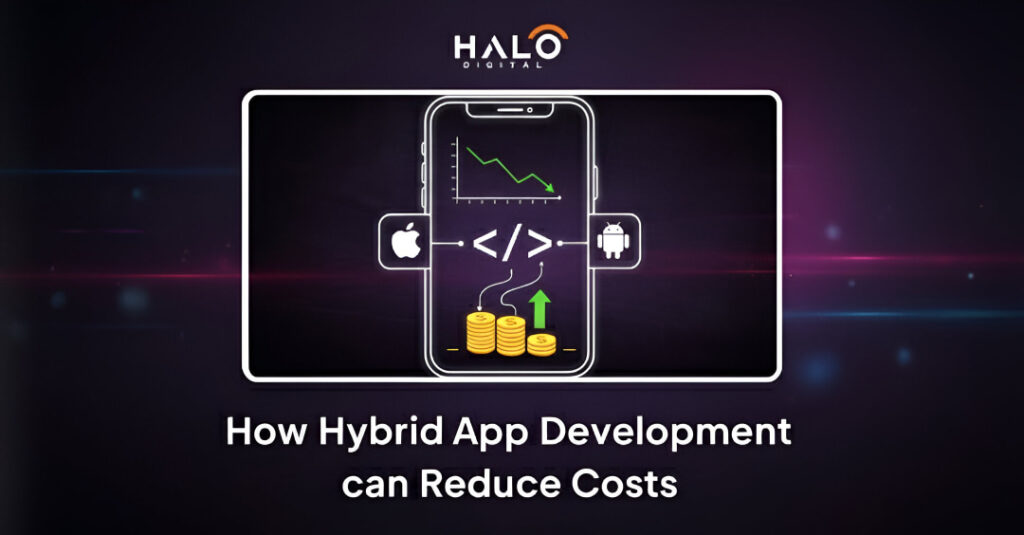Results focused web design is more than just creating a good-looking website.
It is about building a site that actively drives business outcomes like sales, signups, and customer engagement.
This approach blends visual appeal with purpose, ensuring every design element contributes to a clear goal.
Often described as conversion focused, ROI driven, or performance based design, this strategy helps businesses turn visitors into customers and clicks into measurable growth.
In this article, we will break down why this approach matters and how it can directly impact your business success.
What Is Results-Focused Web Design?
The term “result-driven” web design is used to describe developing websites with the goal of achieving specific, quantifiable business goals. Contrary to traditional web design that often focuses on appearance or branding over performance, this method makes sure that every design choice can be attributed to effectiveness. This includes:
- Web design that is conversion-driven focuses on making visitors leads or clients.
- Web design that is performance-based improves usability, speed, and user flow to meet business KPIs.
- ROI driven web design makes sure each design element contributes to an increase in ROI.
It’s more than just creating something that looks nice. The focus is on web design that drives results, creates growth, encourages growth, and helps sustain long-term achievement.
Why Results-Focused Web Design Matters for Business Growth
Results-driven web design focuses on achieving measurable goals instead of following personal preferences. It uses intentional design elements to guide users toward specific actions like making a purchase or subscribing to a newsletter. Every design decision supports a clearly defined objective.
Here’s why results-focused web design plays a key role in business growth:
1. Converts Visitors to Customers
A well-designed site employs strategically placed elements such as clear calls-to-action (CTAs) as well as smooth user flow and compelling messages to encourage users to take actions. This can result in higher conversion rates and increased sales or leads from the same visitors.
2. Aligns Design with measurable business goals
In contrast to traditional design strategies that focus on results, websites are designed with KPIs in mind. This includes filling out forms, signing up for emails, and making purchases or bookings. Every aspect is designed to meet these particular goals of the business.
3. Enhances User Experience (UX) for Better Engagement
A well-designed UX helps keep visitors to your site for a longer period of time. It encourages them to explore your site and decreases bounce rates.
From simple navigation to speedy page loading, the style boosts satisfaction and increases the number of visits, which increases the bottom line of your business.
4. Boosts SEO Performance and Organic Traffic
Web design is directly influenced by the rankings of search engines. Mobile responsiveness, speed of site, crawlable structures, and optimized visuals all help improve SEO, bringing more organic traffic, without increasing the amount of advertising.
5. Maximize ROI through Strategic Design Choices
Every dollar you invest in UX audits, A/B tests, or heatmaps has an objective: to improve conversion rates and decrease friction. This method ensures that the designs aren’t just beautiful but also profitable and can yield the most on investment.
6. Builds Trust and Long-Term Brand Credibility
First impressions count. A neat, professional look establishes trust quickly. A consistent design across all pages, a carefully planned layout, and polished branding demonstrate that your company is trustworthy, leading to greater brand loyalty and referrals over time.
Core Principles of a Growth-Driven Web Design Strategy
To design a website that supports business growth, it is essential to move beyond just aesthetics and focus on performance. Growth-driven design is flexible, customer-centric, and backed by data. These principles are the basis for creating websites that change to change, grow, and continually improve on the basis of real-world outcomes.
1. Goal-Oriented Planning and Strategy
Create goals that are SMART (specific, measurable, achievable, relevant, and time-bound) right from the beginning. Every page, layout, and feature must be designed with a clear goal that is linked to measurable outcomes, be it leads, conversions, or even product engagement.
2. Audience Research and Behavior Analysis
Know your audience before creating to meet their needs. Analyze personas, session recordings, and behavioral trends to ensure the site matches audience needs, interests, and expectations—resulting in better engagement and higher conversion rates.
3. Agile and Data-Driven Design Process
Growth-oriented strategies rely on the flexibility of work. Start quickly, and then tweak by utilizing the feedback of users and analytics. This approach ensures that your website is able to evolve with your objectives and stays at the forefront of the competition.
4. Continuous Improvement Through Testing (A/B, Heatmaps, Analytics)
Utilize tools like heatmaps, A/B testing, and Google Analytics to test performance. Early optimization in response to user behavior improves the usability, conversions, and overall efficiency of your site as time passes.
5. Integration with Sales and Marketing Objectives
A highly effective website will support your marketing and sales strategies. Be sure to align design elements and funnel goals, transforming your website into a lead generation tool, not just a brochure.
Essential Features of a Conversion-Focused Web Design
A conversion-focused website design is more than just visuals. It’s about leading users towards a goal. Be it an order, form submission, or sign-up form, each component should be placed strategically to facilitate conversion and engagement. A result-oriented web design employs information, UX best practices, and business knowledge to create tangible results.
1. Clear Value Propositions and Call-to-Actions (CTAs)
Let people know immediately what you provide, what it is, why it’s important, and the way it can benefit customers. CTAs should be clearly defined, compelling, and convincing and located where people will be most inclined to take action.
2. Fast Load Times and Performance Optimization
Speed is important. Slow websites lead to large bounce rates. Make sure you optimize image sizes, eliminate unnecessary scripts, and select speedy hosting to guarantee smooth, speedy loading pages that enhance the UX as well as SEO.
3. Mobile Responsiveness and Cross-Device Compatibility
Your website must function seamlessly across tablets and smartphones as well as desktops. A responsive layout adjusts to any size screen, providing the same user experience that is in line with the latest trends in browsing and increases mobile conversions.
4. Logical, User-Centric Navigation Structure
Visitors shouldn’t feel lost. Develop a simple, easy menu as well as internal link strategies that help users quickly find information. A well-planned journey decreases the friction and improves engagement.
5. Clean, SEO-Optimized Site Architecture
The back end of your website must be as polished as your front. Make use of the correct HTML tags and internal hyperlinks, meta descriptions, and schema markups to help search engines comprehend and rank your website’s content better.
6. Social Proof and Trust Elements (Testimonials, Reviews, Certifications)
Add testimonials from customers as well as user reviews and industry or security certifications to increase credibility. These features reduce suspicion and make visitors feel more comfortable and increase their likelihood to purchase.
7. Accessibility and Inclusivity for Broader Reach
Design that is accessible to all users, including disabled users. A design that’s accessible (alt text, keyboard navigation, easily read fonts) makes it easier for everyone to use the site and is in line with the inclusive web standards and guidelines.
8. Analytics Integration for Ongoing Improvements
Monitor user behavior with tools such as Google Analytics, Hotjar, or Microsoft Clarity. Real-time data allows you to improve your web design based on performance and uncover the root of your issues and continually optimize your site to achieve better results.
How to Create a Web Design That Drives Results
Making the web design that drives results requires planning, testing, and continuous improvement. Instead of launching and then forgetting, companies must approach web design as a permanent strategy. Here are some key steps to ensure that your design is in line with your business objectives, enthuses users, and provides tangible results.
Step 1: Define the KPIs aligned with Business Goals
Begin by identifying the precise objectives your website must achieve, whether you’re looking to generate leads, sales of products, form submissions, or booking requests. Setting up specific KPIs ensures that your web design will yield results that affect your business.
Step 2: Conduct Competitive and Audience Research
Examine the websites of your competitors to find strengths and areas for improvement. Examine your target audience’s needs, behavior, and habits. Make use of this knowledge to design an approach that is distinct and aligned with users’ expectations.
Step 3: Map the Customer Journey and Design Accordingly
The entire path that a user goes through from the first time they visit until the last conversion. Develop each page and every interaction to help users navigate the process with useful information, CTAs, and intuitive navigation.
Step 4: Focus on Conversion Rate Optimization (CRO)
The design of a conversion-oriented website does not stop at aesthetics. Make use of tools like A/B tests, scroll maps, and click tracking to alter elements of design that directly affect the completeness of forms, purchases, and sign-ups.
Step 5: Implement UX and Performance Testing Tools
The best design is rooted in actual data. Tools such as Lighthouse, PageSpeed Insights, and session replays reveal hidden UX problems. Resolving these issues improves user engagement and aids in providing results-oriented web design.
Step 6: Set Up Regular Reviews and Iteration Cycles
A static website can’t grow to the needs of your business. Set up quarterly or monthly reviews to review data, gather feedback, and then roll out changes to the design that continue to improve performance.
The Intersection of SEO and Results-Focused Web Design
A properly optimized website doesn’t only appear attractive; it is also a great performer in search results as well. In the event that web design for business growth is paired with SEO best practices, the result will be an effective, user-friendly website that is able to draw organic traffic and produce measurable results. The two go hand in hand together.
1. How Technical SEO Impacts Design
The technical SEO aspects, like the speed of websites, mobile usability, and structured data, affect the rankings of search engines as well as general user experience.
2. On-Page SEO Best Practices for Designers
Designers should make use of H1 tags and meta descriptions, as well as internal links and concise URLs, to ensure that their websites have a strong SEO performance.
3. Designing for Featured Snippets and Voice Search
Make sure your headings are well-structured, with brief text blocks, as well as FAQ sections to improve your chance of being included in snippets and voice results.
4. Optimizing Site Speed and Core Web Vitals
Design directly impacts Core Web Vitals such as Largest Contentful Paint (LCP) and Cumulative Layout Shift (CLS) that affect search engine visibility.
5. SEO Analytics for Measuring Design Performance
Analyze bounce rates, keyword rankings, and click-through rates using Google Search Console as well as GA4 to assess the effectiveness of design and make improvements.
How to Measure the Success of ROI-Driven Web Design
A successful, ROI-driven website design should be assessed using specific performance indicators that show the real business impact and not just aesthetics.
1. Traffic and Bounce Rate Analytics
A rise in organic traffic and a decreased bounce rate mean that your site’s layout is engaging and has attracted the right type of audience.
2. Conversion Rate and Lead Quality
Monitor how many users convert and evaluate whether these leads are in line with your desired market and quality of the sales funnel standard.
3. Time-on-Site and Page Engagement
Increased session durations and longer page views suggest that readers find your content interesting as well as engaging and simple to navigate.
4. ROI and Cost-Per-Acquisition (CPA)
Check the cost of customer acquisition against revenue to make sure your design investment is profitable and sustains your business’s growth.
5. Customer Retention and Satisfaction Metrics
Positive and frequent reviews from users indicate that your site’s design is a reliable, consistent, and user-centric online experience.
Common Mistakes That Hurt Performance-Based Web Design
Beware of these mistakes to ensure that your web design has real results instead of just looking great.
1. Ignoring User Feedback and Data
If you don’t continuously monitor user feedback and tracking behavior, it is difficult to make crucial improvements that improve customer experience and increase conversions.
2. Prioritizing Aesthetics Over Functionality
A stunning site that is difficult to use can cause users to be frustrated. Make sure you put in accessibility, usability, and easy navigation.
3. Underestimating Mobile and Accessibility Issues
Design needs to be flexible across the different sizes of screens and needs of users. Mobile responsiveness and accessibility are not a matter of debate for performance in the 21st century.
4. Failing to Set Clear Goals and Track Results
Without clearly defined KPIs and monitoring systems to track your site, the website will not improve its performance or demonstrate ROI. Goals should guide every design decision.
Let’s Build a Website That Actually Delivers Results
At Halo Digital, our website design services are built to perform. We combine user experience, responsive design, and SEO best practices to create websites that convert visitors into loyal customers. Whether you need a custom website, a redesign, or a fully optimized platform, we focus on delivering real business outcomes through every design decision.
FAQs
1. What is the main difference between traditional and results-oriented web design?
Traditional design emphasizes aesthetics and style, whereas a design that is focused on results is a perfect fit with the business goals and performance metrics.
2. How can I tell whether my website’s design has an ROI?
Designing your website should affect leads, conversions, or sales. If you are able to measure ROI, you’re on the right path.
3. When should I refresh my site to keep it performing?
Update and review your design at minimum once every quarter. Technology and user preferences change rapidly; that’s why your design should too.
4. Can small businesses benefit from the growth-driven design of a website?
Absolutely. In fact, small-scale enterprises can experience faster, more powerful results when they adopt designs that are based on data early in the process.
5. Does performance-based design just work for eCommerce sites, or is it applicable to all websites?
Every website can benefit from it. If you’re creating leads or bookings or downloads, the performance-based design can help you achieve your objectives.
Conclusion: Choose Web Design That Drives Real Business Results
Designing a website that is focused on results is vital for businesses looking to expand online. Your website can be transformed into an effective tool to increase engagement in the long run, as well as conversions and return on investment.
Through the integration of the strategic approach, continuous testing, and goal alignment, you can create a web design that drives results and is in line with your overall marketing objectives. If you’re ready to adopt an approach that is more effective, opt for a goal oriented web design built to adapt with your company.

Abdullah Mangi is an SEO strategist and content writer with 5 years of experience helping businesses grow online. He writes about programming, tech, online business, and practical how-to topics. Abdullah has worked with clients in SaaS, software development, web design, link building, yacht rentals, gardening, car rentals, and recruitment.






